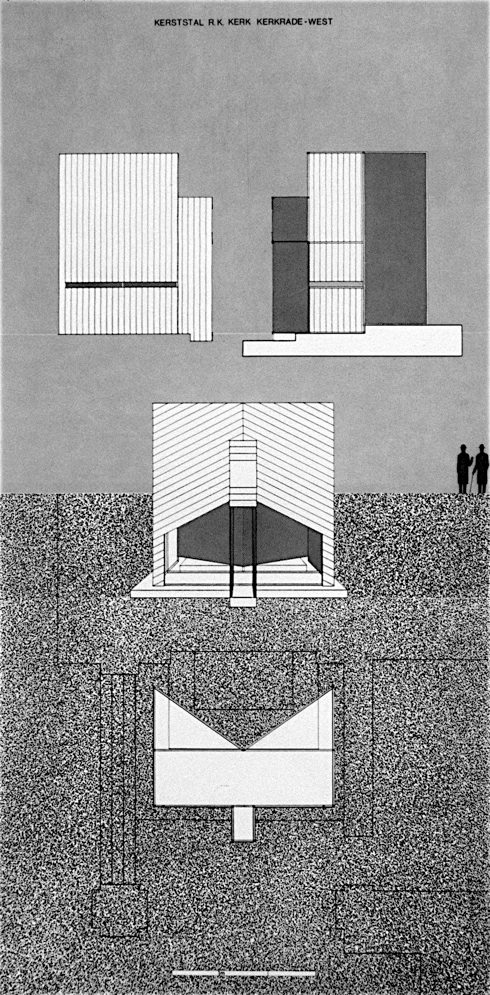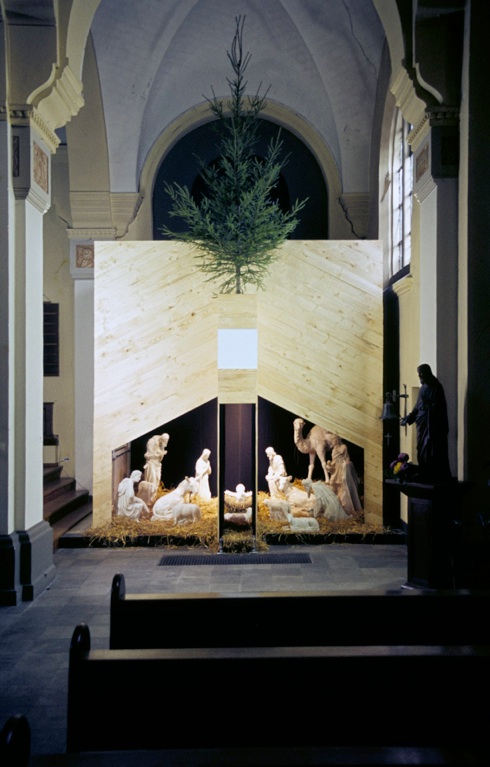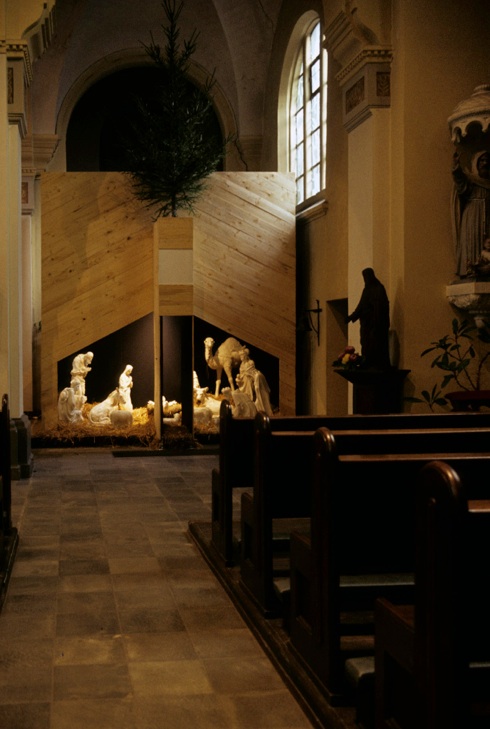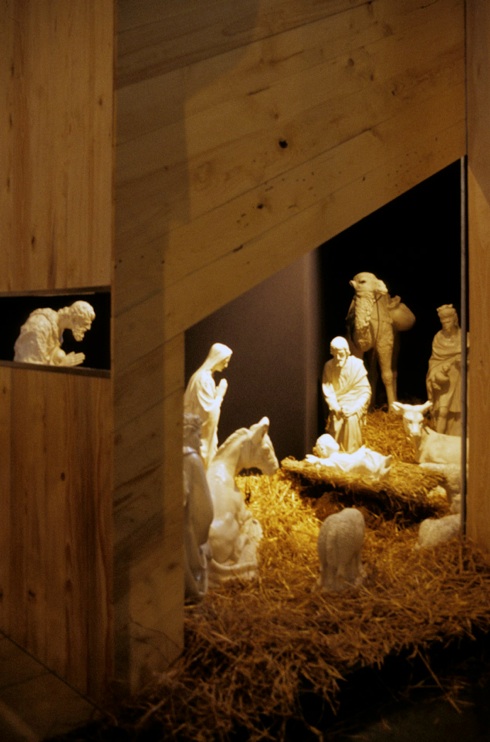Prof. ir.
Wim van den Bergh Architect
Prof. ir.
Wim van den Bergh Architect

1984/02
Selected Realisations
“Aedicula”
i.c.w.: Arets, W.
Disassemblable Christmas Crib for the Chuch of “Onze Lieve Vrouw Onbevlekt Ontvangen”, Terwinselen, Kerkrade-west
Publication: 1984/03
Exhibition:
Realisations




Nativity as festival architecture
The celebration of Christmas with a depiction of the birth of Christ goes back to before 1223, the year in which St. Francis of Assisi built a nativity scene in the form of a crib in the Church in Greccio. In the Netherlands its known that Roermond from 1370 and Utrecht from 1489 on built nativity scenes in churches. This is not surprising when we consider that at this time the spiritual life was closely connected with the mystery play, a medieval form of drama, developed from the church liturgy and based on episodes from the life of Christ. One of the writers on folklore in Limburg, namely Roukens, calls the nativity 'a congealed mystery play '. The crib can to this day be seen as a form of festival architecture, a temporary monument that is each year assembled and disassembled, as also happened with the scenery of the ancient mystery plays which, like the Christmas festivities were associated with fixed dates. It was Pope Liberius who shortly after 300 fixed the date for Christmas on December 25; in the context of this brief text it would go too far to address the relationship between this date and the celebrations of the winter solstice. The important thing is that on this day a community becomes aware of its shared believes and expresses this in a celebration.
The starting point for the creation of the new crib was to design an easy to assemble/disassemle scenery depicting the images of a stable cum cave, as the story in Luke 2 described. This abstracted ceremonial stable/cave or symbolic space of a 'house in Bethlehem' stands for the duration of Christmas for the birthplace of Christ. Within this crib the actuality of this and other ceremonial events, as also expressed in the paintings of Charles Eyck within this church, is brought to the fore by the (back)projection of slides (on a small square screen) showing the reality of the moment and thus giving rise to reflection. The symbolic character of this festival is expressed by the elements composing the whole: the wooden stable/cave/house, the straw, the Christmas tree, the nativity statues, the slide projection, the light. The temporary character of this 'monument', this house within the communal home of the church, prompted the use of an easy to assemble construction of steel tubes, wooden planks and black cloth. The whole uses the steps of a side altar as a base for a structure of steel tubes that are fitted together with standard joints. The planks are simply clicked on to this structure by tool clamps fixed to the back of the boards. The back and right side of the crib is covered with black cloth acting as background to the white plaster nativity statues of the church.